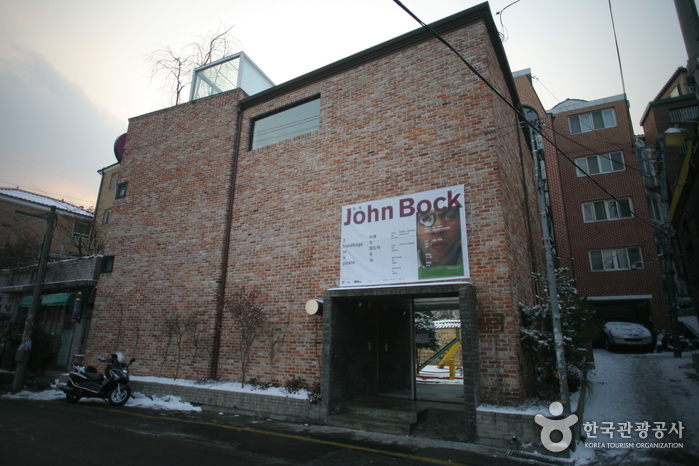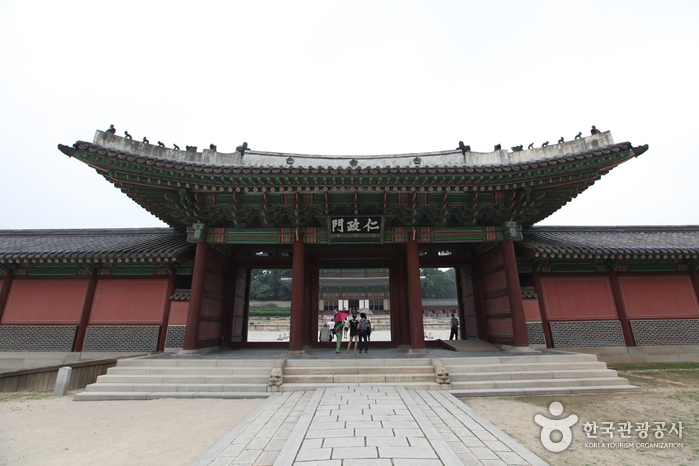Insa Art Space (인사미술공간)
7.1Km 2021-02-26
89, Changdeokgung-gil, Jongno-gu, Seoul
+82-2-760-4722
Insa Art Space was established in 2000 to support artists who are experiencing financial difficulties. In 2005, Art Space started to develop artistic projects and in 2006, the gallery began to provide project consultations, and publishing and marketing, to develop into a stronger self-sufficient gallery. Currently, the gallery provides special exhibitions for artists and independent curators.
Jongmyo Shrine [UNESCO World Heritage] (종묘 [유네스코 세계유산])
7.1Km 2024-07-05
157 Jong-ro, Jongno-gu, Seoul
+82-2-765-0195
Jongmyo Shrine was the primary place of worship for kings and their queens throughout the Joseon dynasty. The shrine was built at the same time as Gyeongbokgung Palace, under the orders of King Taejo, the first king of the Joseon dynasty. The shrine is the site of the royal memorial service, called Jongmyo Jaerye, a national event that has been passed down since the Three Kingdoms period. During the Joseon dynasty, the ritual was held on the first month of a seasonal change and the twelfth month of the lunar year.
Samcheong Park (삼청공원)
7.1Km 2024-03-18
44, Insadong-gil, Jongno-gu, Seoul
+82-2-2148-4150
Samcheong Park is a park that blooms in cherry blossoms in spring and fall colors in fall near Gyeongbokgung Palace. The park is home to a forest library and a café, and visitors can follow the trails to find acupressure trails, exercise equipment, badminton court, tennis court, playground, and a convenience store. The area surrounding the park is home to many galleries and restaurants, so it is a popular destination for walking among the people of Seoul.
National Theater of Korea (국립극장)
7.1Km 2024-03-06
59, Jangchungdan-ro, Jung-gu, Seoul
+82-2-2280-4114
The National Theater of Korea opened in 1950 as the first national theater in Asia. It is the only production theater that takes traditional arts to recreate them as contemporary art. It offers various types of theaters, such as Haeoreum Grand Theater, Daloreum Theater (middle-size), Immersive Studio ByeolByeol (small-size), and Haneul Round Theater with a circular stage structure. In addition, the Museum of Performing Arts, Cultural Plaza, and other convenience stores and coffe shops offer pleasure and relax to its visitors.
Changdeokgung Injeongmun Gate (창덕궁 인정문)
7.1Km 2025-01-14
99, Yulgok-ro, Jongno-gu, Seoul
+82-2-3668-2300
Serving as the main gate of Injeongjeon Hall, Injeongmun Gate was established in 1405 (5th year of King Taejo’s reign during the Joseon dynasty). Later on, the gate was destroyed by multiple fires during the Imjin War (Japanese invasion of Korea in 1592), therefore current form of the establishment displays designs that are more often seen in the late 19th century's. In addition, a lot
of subsidary marks and buildings are removed from the original places and relocated passing the time, however, still remains to represent prestigious ambience.
Injeongmun Gate served as the place for several coronation ceremonies of kings, prince's succession of throne, and many other national affairs celebrated by the royal members who gathered and aligned around this gate.
Himart - Bulgwang Branch [Tax Refund Shop] (하이마트 불광점)
7.1Km 2024-04-22
766, Tongil-ro, Eunpyeong-gu, Seoul
-
Leeum, Samsung Museum of Art (삼성미술관 리움)
7.1Km 2022-12-15
60-16, Itaewon-ro 55-gil, Yongsan-gu, Seoul
+82-2-2014-6901
Leeum, Samsung Museum of Art, exhibits traditional and modern art works by Korean and international artists. The museum itself is just as fascinating as the art works on display, since the museum's three buildings were designed by internationally renowned architects Mario Botta, Jean Nouvel, and Rem Koolhaas.
MUSEUM 1 houses traditional Korean art, such as calligraphy, paintings, ceramic arts, and metal craftwork, while MUSEUM 2 displays modern and contemporary art by both Korean and international artists.
Olive Young - Sindaebang Station Branch [Tax Refund Shop] (올리브영 신대방역)
7.1Km 2024-04-18
1F, 357, Nangok-ro, Gwanak-gu, Seoul
-
ABC-Mart - NC Gangseo Store Branch [Tax Refund Shop] (ABC마트 NC 강서점)
7.2Km 2024-04-18
17, Gangseo-ro 56-gil, Gangseo-gu, Seoul
-
Aritaum - Guro Yeonjigonji Branch [Tax Refund Shop] (아리따움 구로연지곤지)
7.2Km 2024-04-18
127, Gurodong-ro 26-gil, Guro-gu, Seoul
-



![Himart - Bulgwang Branch [Tax Refund Shop] (하이마트 불광점)](http://tong.visitkorea.or.kr/cms/resource/66/2889966_image2_1.jpg)
![ABC-Mart - NC Gangseo Store Branch [Tax Refund Shop] (ABC마트 NC 강서점)](http://tong.visitkorea.or.kr/cms/resource/26/2890326_image2_1.jpg)
![Aritaum - Guro Yeonjigonji Branch [Tax Refund Shop] (아리따움 구로연지곤지)](http://tong.visitkorea.or.kr/cms/resource/24/2880224_image2_1.jpg)
 English
English
 한국어
한국어 日本語
日本語 中文(简体)
中文(简体) Deutsch
Deutsch Français
Français Español
Español Русский
Русский